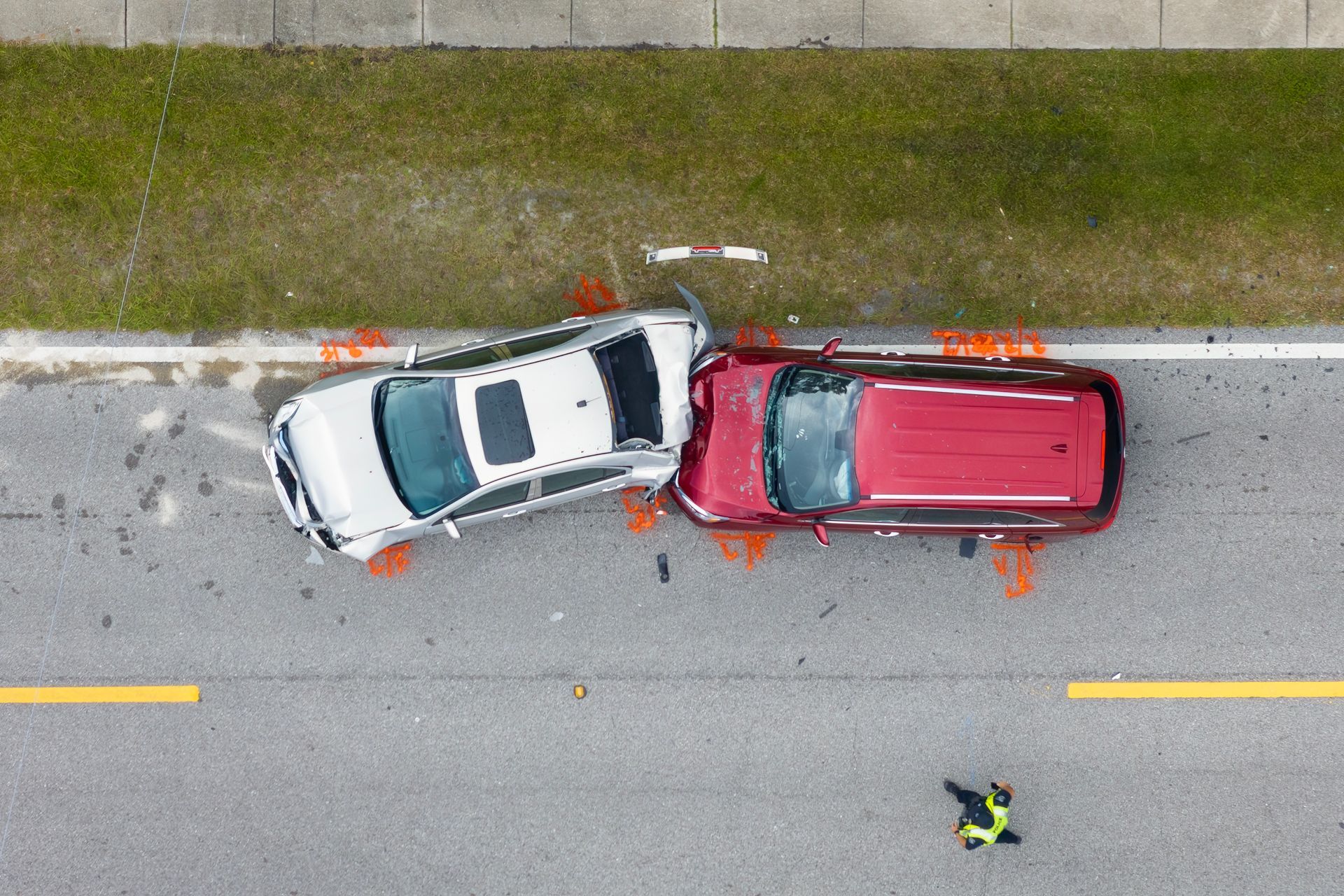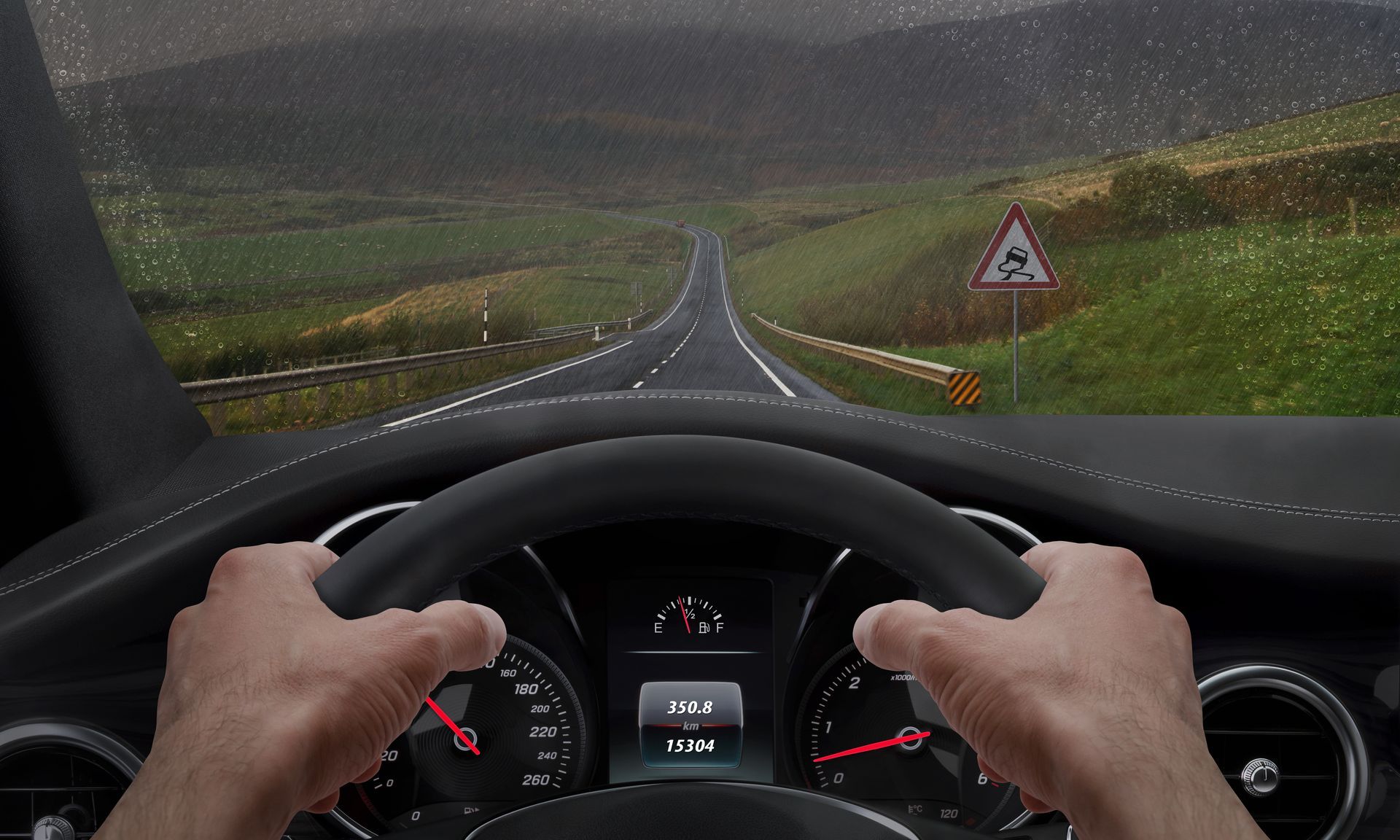Don't Call Christina Later, Call Christina Now
Follow us
What Speed Do Most Car Accidents Happen At?
Speed Limits and Safety:
What You Need to Know About Car Accidents
Car accidents are an unfortunate reality on the roads. From fender benders to catastrophic crashes, they can occur at any time and in any location. However, the speed at which these accidents occur plays a significant role in the severity of the incident and the outcome for everyone involved. In this blog, we’ll explore the speeds at which most car accidents happen, why speed matters, and how driving within safe limits can prevent accidents.

Why Speed Matters in Car Accidents
The faster you drive, the more time and distance it takes to react to unexpected hazards. Speed is one of the most important factors when it comes to car accidents, as it affects stopping distance, reaction time, and the overall impact of a crash. The higher the speed, the more force is exerted on the vehicles involved, making accidents more likely to result in serious injuries or fatalities.
When driving at higher speeds, you may not have enough time to react to sudden obstacles like another vehicle, a pedestrian, or debris on the road. This can cause a chain reaction that leads to severe accidents. So, it’s crucial to understand the impact of speed and make smart choices when you’re behind the wheel.
What Speed Do Most Car Accidents Happen At?
While accidents can happen at any speed, the data shows that the majority of crashes occur at speeds below 40 mph. According to the National Highway Traffic Safety Administration (NHTSA), most accidents happen in urban areas where speed limits are lower, and drivers are more likely to stop at intersections or react to other vehicles. These accidents can range from rear-end collisions at stoplights to fender benders in parking lots.
However, it’s important to note that the severity of accidents increases significantly as the speed increases. Collisions that occur at speeds above 40 mph are more likely to result in serious injuries, including broken bones, internal injuries, and even fatalities.
Here’s a quick breakdown of typical speeds and how they correlate with accident severity:
Low-Speed Accidents
(Up to 25 mph):
Minor fender benders and collisions at intersections. These are less likely to cause serious injuries, but they still may result in property damage and stress for those involved.
Mid-Speed Accidents
(25-40 mph):
This range includes many rear-end collisions, particularly in traffic. Injuries can vary, from whiplash to more serious neck and back issues.
High-Speed Accidents
(Over 40 mph):
These accidents are often the most dangerous, with high-speed collisions typically resulting in severe injuries or fatalities. High-speed crashes are particularly common on highways or rural roads where drivers may exceed speed limits.
Speeding Safety Tips for Every Vehicle:
How to Drive Responsibly
Semi-Trucks
- Tip: Semi-trucks require longer stopping distances due to their size and weight. Always drive at a safe speed and increase your following distance to allow for safe stopping.
- Why It Matters: Trucks take much longer to brake, so driving too fast can lead to accidents, especially in poor weather conditions or heavy traffic.
Commercial Trucks
- Tip: Commercial truck drivers should always adhere to posted speed limits, especially in urban areas where there are more pedestrians and tighter spaces.
- Why It Matters: Commercial trucks often carry heavy loads that affect braking ability. High speeds in congested areas increase the risk of collisions and accidents.
Trucks/SUVs
- Tip: Trucks and SUVs, while offering more power, have a higher center of gravity. Always slow down in sharp turns or bad weather conditions to avoid rollovers.
- Why It Matters: Speeding in a truck or SUV increases the risk of tipping, especially on curves or slippery surfaces.
Sedans
- Tip: For sedans, always follow speed limits in residential and school zones. While sedans have better handling at higher speeds, they still require more distance to stop than expected.
- Why It Matters: Speeding in sedans can lead to quicker loss of control, especially in inclement weather or in areas with a lot of foot traffic.
Motorcycles
- Tip: Motorcyclists should avoid speeding, as motorcycles are more vulnerable in high-speed situations. Ride defensively, keeping a safe distance from other vehicles.
- Why It Matters: Motorcycles have less stability at high speeds, and speeding in tight traffic or on winding roads can lead to dangerous accidents.

The Dangers of Speeding on Highways
While most accidents occur at lower speeds, highways and interstates tend to see more severe crashes due to higher speeds. On highways, speed limits typically range from 55 mph to 75 mph, but many drivers exceed these limits, putting themselves and others at risk. The higher the speed, the greater the force in a crash. In fact, a crash at 60 mph has four times the impact of a crash at 30 mph.
The Dangers of Speeding on Highways
While most accidents occur at lower speeds, highways and interstates tend to see more severe crashes due to higher speeds. On highways, speed limits typically range from 55 mph to 75 mph, but many drivers exceed these limits, putting themselves and others at risk. The higher the speed, the greater the force in a crash. In fact, a crash at 60 mph has four times the impact of a crash at 30 mph.


How Speeding Increases Risk
- Reaction Time: At higher speeds, your reaction time decreases. It takes longer to stop, and the distance needed to brake safely is much greater.
- Stopping Distance: A car traveling at 60 mph needs about 200 feet to come to a complete stop. At 30 mph, that distance shrinks to just 100 feet.
- Severity of Injury: High-speed accidents cause greater forces to be exerted on both the vehicle and the people inside. The risk of injury increases significantly at speeds higher than the posted speed limits.
- Loss of Control: Higher speeds make it harder to maintain control of your vehicle, particularly in adverse conditions like rain or snow. Speeding around curves or sharp turns increases the chances of losing control.
Speed Limits and Safe Driving Practices
Speed limits are set for a reason: they represent the safest speed for a given road or area. These limits take into account factors like road conditions, traffic flow, visibility, and potential hazards. Driving at or below the posted speed limit is the best way to minimize your risk of being involved in an accident.
Even when you’re not speeding, remember that driving too fast for road conditions can still be dangerous. For example, if the weather is poor or traffic is heavy, it may be necessary to drive well below the speed limit to ensure safety. It’s important to adjust your speed to the conditions around you, no matter what the posted limit says.

Tips for Safe Driving
- Always obey the speed limits: These limits are set based on various safety factors, so driving within them is the best way to stay safe.
- Adjust speed for road conditions: Weather, traffic, and visibility can all affect how safely you can drive. Slow down when conditions are less than ideal.
- Give yourself extra stopping time: Keep a safe distance from the vehicle in front of you, especially at higher speeds, and give yourself plenty of time to react to sudden changes in traffic.
- Avoid distractions: Distractions like texting or talking on the phone can make it harder to respond quickly to a hazard. Stay focused on the road to drive safely.
Tips for Safe Driving
- Always obey the speed limits: These limits are set based on various safety factors, so driving within them is the best way to stay safe.
- Adjust speed for road conditions: Weather, traffic, and visibility can all affect how safely you can drive. Slow down when conditions are less than ideal.
- Give yourself extra stopping time: Keep a safe distance from the vehicle in front of you, especially at higher speeds, and give yourself plenty of time to react to sudden changes in traffic.
- Avoid distractions: Distractions like texting or talking on the phone can make it harder to respond quickly to a hazard. Stay focused on the road to drive safely.

Car accidents happen at all speeds, but the risk of injury and death increases with higher speeds. It’s essential to drive responsibly, respect speed limits, and adjust your speed for road conditions. Whether you’re navigating city streets or cruising down the highway, being aware of your speed can save lives and prevent unnecessary accidents.
If you or a loved one has been involved in a car accident, it's important to understand your rights. Contact a professional to learn about the next steps you should take.
For assistance with your car accident case or to learn more about your options, contact us today. Share this blog to help others understand the importance of safe driving and speed awareness.
Quick & Reliable
We are available 24/7 to Guide You to Better Health.
CALL CHRISTINA NOW is here to help 24 hours a day, 7 days a week, offering free and compassionate support. When you call us, we'll listen to your concerns, understand the specifics of your accident, help you find medical care for your injuries, and connect you with a professional who can advise you on the legal aspects of your situation.
CALL CHRISTINA NOW specializes in assisting with Lawyer and Medical Accident matters. If you've been in a car, motorcycle, or truck accident—or any other kind of accident—contact us today for trustworthy support.
DISCLAIMER:
CALL CHISTINA NOW isn't a law firm and can't provide legal advice, but we can refer you to the right attorney who can.
All Rights Reserved | Call Christina Now
Copyright © Call Christina Now Offers All Rights Reserved 2025
View Our Privacy Policy | Terms & Conditions | Disclaimer
